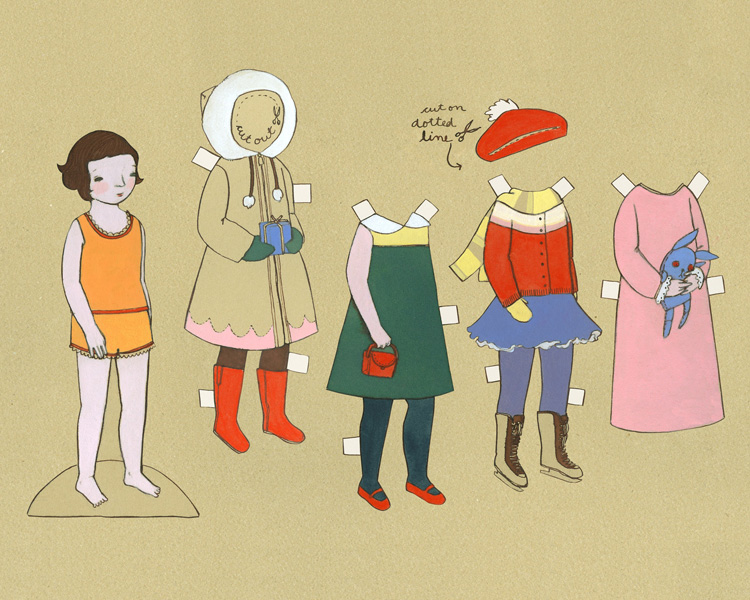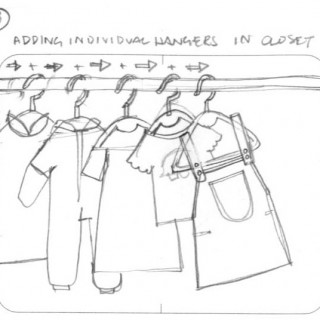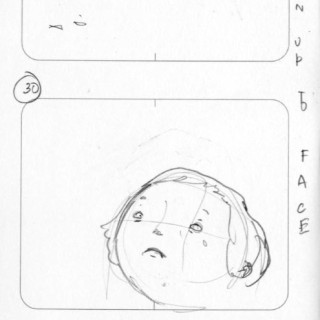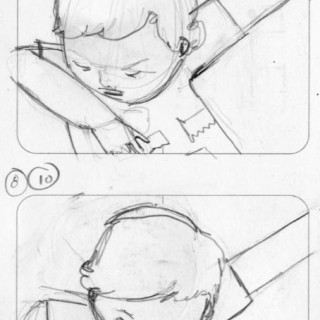The Longest Shortest Time
Video: The Emperor’s New Onesie
Okay, let’s cut right to the chase. For months I have been dying to share with you LST’s very first video—the product of the smoothest collaboration I have ever been a part of. So I’ll take a moment to step back, let you watch this adaptation of Ep. 9: The Emperor’s New Onesie, and then you can read on and find out how the video came to be.
Now for the behind the scenes stuff.
For those of you who have pitched me your stories for the podcast (and thank you for that!), you know that I have a one-paragraph rule when it comes to submissions. This is mainly because I don’t have much time to read the many submissions that come my way, but also because I believe that compelling stories can always be sold in a single paragraph. If those paragraphs leave you wanting more, they are doing their job. The stories that I’ve put on this podcast have either come from people I know or from people who have successfully woken me out of my mommy-induced stupor and driven me to do work that I am not paid for in time that I don’t have (a note on this below). No pitch has done this so clearly as the one I received from Joyce Slaton. In her e-mail, Joyce just basically told me that she had a toddler who went naked for an entire month and during that time they never left the house. I had to know more. Wouldn’t you?
So when my radio colleague, Rekha Murthy, came to me asking if I’d like to be the recipient of a small grant she received from the Knight Foundation to develop an existing podcast episode into a video, I knew the answer was yes and I knew the episode had to be “Onesie.” I mean, I racked my brain, thinking about all of the other episodes, but the rest were either not narrative enough plot-wise or were really boob- or vagina-centric. Which poses some challenges visually. A funny thing to say, considering “Onesie” is all about nudity. Not to mention child nudity. But I had faith that a talented illustrator would handle that tastefully.
And tastefully she did! Just as intuitively as I knew “Onesie” was our episode, I also knew that our illustrator had to be Jen Corace. Jen is one of my favorite illustrators—I’ve mentioned her work in children’s books like Mathilda and the Orange Balloon and This Plus That on this blog—and this gorgeous print made it clear to me that Jen was the right lady for our clothing-strewn tale.

“Dress’m Up” by Jen Corace
Neither Jen nor I had any experience with animation, so I hunted for an animator who would help us bring Jen’s watercolors to life. Video producer Joe Posner turned out to be the perfect collaborator. Joe suggested that Jen’s work was best suited to a style of animation using paper cut-outs, a la Terry Gilliam from Monty Python. An idea that I loved.
Our process was basically this:
1. I cut down the episode so that it would only include Joyce’s voice, not my intro or questions. I also wanted the story to focus on, well, the story—not so much on the reflection or emotional analysis of the story. While I think reflection is key to the audio version, I felt it would be difficult to produce, and not necessarily interesting to watch, someone going to therapy and figuring out that her daughter has a sensory processing disorder. The info is still in there; it’s just not something that gets worked through the way Joyce and I do in the podcast.
2. Jen took the cut-down audio and drew up a storyboard.




Jen really got my desire to have the video not be a literal visual translation of the audio but to say something new itself (note the snakey/firey/cactusy clothing!). Joe and I gave her notes on where we thought that could be done even more strongly and Joe advised on how to carry out Jen’s ideas technically.
3. Joe and Jen spent two days—and long nights—in Jen’s Providence studio building the elements and animating them. They tell me that they worked through the script, figuring out what needed to happen in each scene, what drawings were necessary, and Jen would go make the drawings on the spot. I love this idea. Drawing on demand.
4. Once I saw a draft of the video, I gave Joe some notes on where I thought the animation could be sharpened/tightened. The timer/sticker chart/raining candy sequence is Joe’s elegant solution to one of those notes. I am still in awe of the blurry candy.
5. Ta-da! We had our video. Ready to present to you on the 19th day of Sensory Awareness Month. Yes, October really is Sensory Awareness Month. (Do you have a child with SPD? Would love to hear from you in the comments.)
One final note. As most of you know, I produce this podcast completely as a labor of love, in the minutes here and there when I can squeeze it in, between work and taking care of my toddler. I do it all for free. Many of you have asked over the last (almost) two years if there’s a way that you can contribute to this cause. Here is a chance to do that. If you like what you see (and hear!), please share this video with anyone you think would appreciate it and consider contributing to the tip jar by following this link to the original Vimeo video.
Many heartfelt thanks to the Knight Foundation, Rekha Murthy, Jen Corace, Joe Posner, and Trevor de Clercq (music) for making this project possible.
UPDATE: These links are from the post for the original podcast episode. But if you’re new to LST and think your child might be showing signs of Sensory Processing Disorder, Joyce recommends checking out the Sensory Processing Disorder Foundation. And she wishes she’d found this clothing company earlier. (See a comment from SOFT’s founder below!)
Illustration: Jen Corace
As an Amazon Associate, The Longest Shortest Time earns a small commission from qualifying purchases.